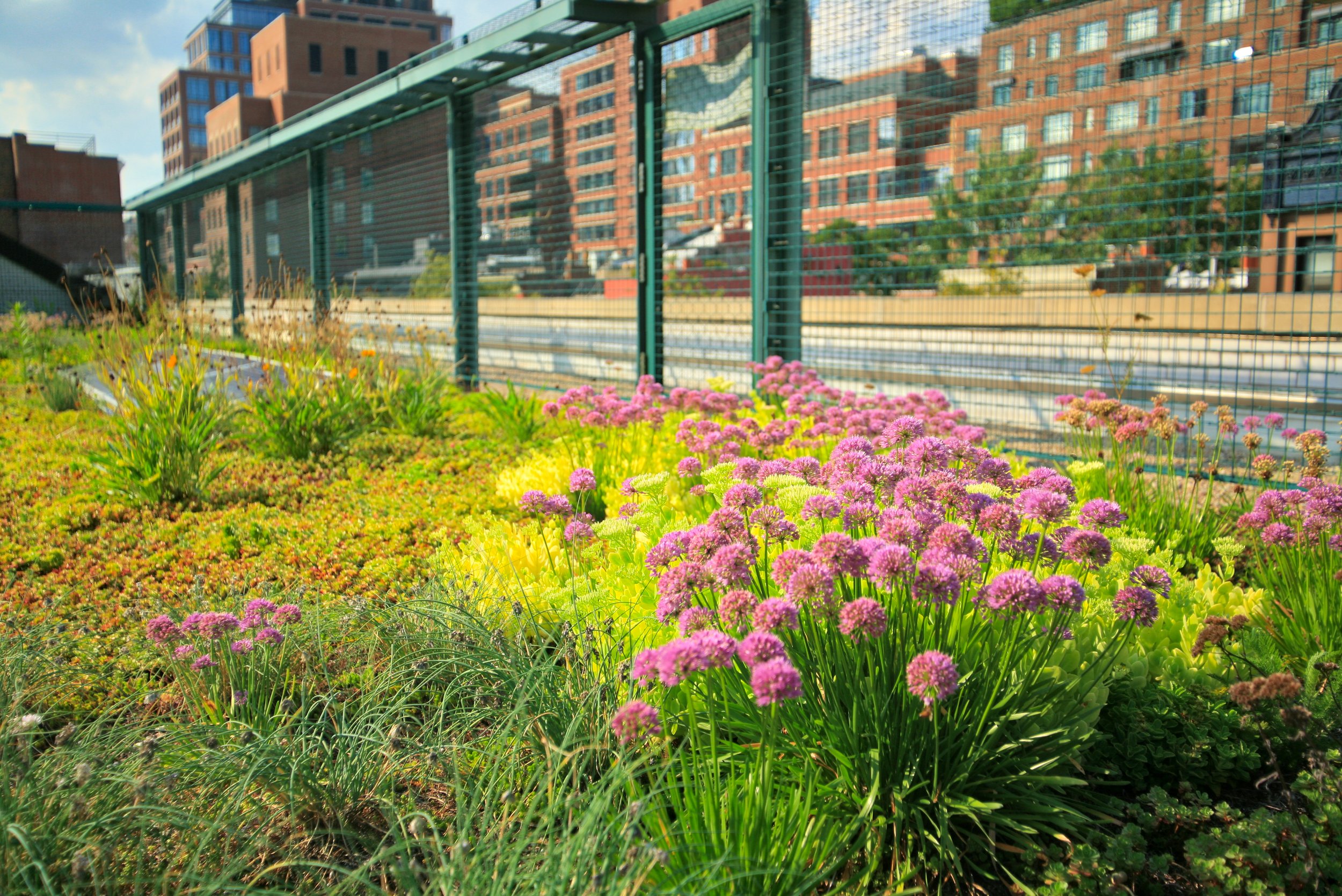Why Green Roofs on School Rooftops Just Make Sense!
Educating the next generation and strengthening local communities starts in our school systems. We’ve seen the power of our global youth through their ability to rise up and take climate action. While the curriculum around climate change and environmental science differs from school to school, an excellent way for children to learn about these topics is by exposure. When children interact with Nature not only do they experience positive health benefits, but they can see Nature in action. What better way to bring nature to urban schools than by covering them with green roofs?
Education isn’t the only benefit schools can give to bolster their community. Installing a green roof can also provide the community with environmental benefits. Green roofs reduce heat island effect, creating cooler temperatures for residents. Green roofs improve our water quality by acting as a stormwater management system, absorbing excess rainwater before it floods our streets or overflows our sewage systems. Additionally, green roofs promote biodiversity and provide habitats for local wildlife.
Educational Benefits of Green Roofs
If you think about the construction of school buildings, the rooftop is usually wasted space that hosts an eyesore of electrical, heating, and ventilation equipment. Why not turn that square footage into a usable learning space. This new rooftop classroom can be a place for recess, science class, school events, alumni fundraisers, and even physical education. Green roofs provide an outlet where students can relieve stress during the school day. Not only is it a great, safe way to allow students to get some fresh air, but it is also a place where science, technology, and nature are intertwined. This hands-on classroom experience teaches students a myriad of subjects including, climate science, STEM, botany, biology, and sustainability. This new space could also allow for on-site field trips and bring in outside educators.
How Green Roofs Save Schools Money
Green Roofs save buildings money by bringing down the costs of building operations. Acting as a natural insulator, green roofs reduce energy consumption used from building heating and cooling, thus decreasing utility costs. The EPA estimates a green roof can save schools up to $41,587 in electricity costs. With constant budget cuts facing our schools, these cost savings can provide relief. Green roofs also increase the life expectancy of a roof, resulting in additional cost savings. A roof membrane protected by all the layers of a green roof can last anywhere from 40 to 60 years longer.
Urbanstrong’s Green Roofs For Schools
In 2012, Urbanstrong’s installation partners brought a 15,000 square-foot sedum and native plant green roof to New York City public school, PS 41. It was dubbed the Green Roof Environmental Literacy Laboratory (GELL). The school has used the green roof as an outdoor learning space for students in all grade levels. Kindergarteners enjoy a "listening walk" tour, while first-graders conduct insect research projects. Second-graders have engineering investigations and skyline drawing in art class. The upper grades are taught green roof STEM model-making projects. The students and teachers have responded very positively to their school’s green roof.
Beyond the social and educational benefits, the school has also seen a positive response in greenhouse gas emissions reductions, energy cost savings, stormwater sequestration, and an increase in biodiversity.
Since completion of the green roof, “data from the 2019 Environmental Protection Agency's Energy Star's Portfolio Manager, an online building energy monitoring tool, details a 35.30% decrease in total greenhouse gas emissions from the school's 2008 energy baseline. A 35.30% reduction in the annual energy that PS 41 consumes onsite, as reported on utility bills.” According to the school, “the 9,000 square feet of vegetation can sequester roughly 182,250 gallons of stormwater annually.”
The public school also boasts a building energy grade letter "A".





